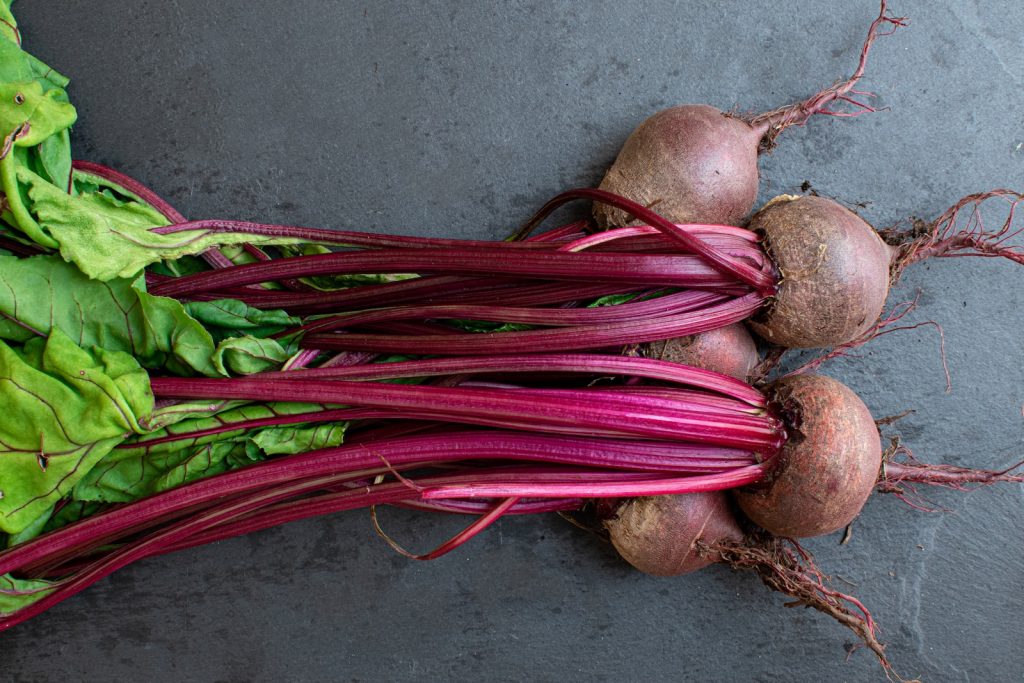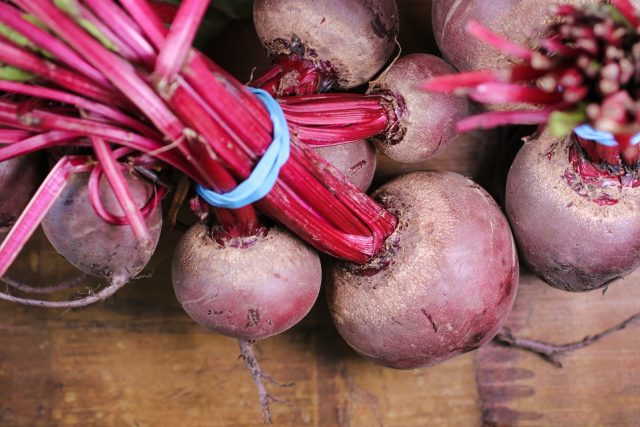Why grow Beet?
Beets are a unique and healthy addition to any garden, and they come in various colors, tastes, textures, and sizes, making them an exciting choice for home growers. Growing beets is relatively simple and offers some great benefits that make it worthwhile. In this article, you’ll find tips for developing a beautiful beet that will provide you with fresh produce all season long.
Beetroots contain vitamins and minerals such as iron, folate, magnesium, and zinc. Studies have also shown that adding beetroot to your diet can help lower cholesterol levels and reduce inflammation in the body. Plus, they make a delicious addition to salads or roasted vegetables! Even those who don’t like their taste can still enjoy their vibrant color when cooked or preserved into pickles or relishes.
The best time to plant Beet
Growing a beautiful beet is no easy feat, but with the right tips and tricks, anyone can produce a delicious, healthy crop of this nutritious vegetable. Knowing when to plant your beets is one of the essential elements of successful beet growing. Planting your beets at the optimal time will ensure they get off to a good start and help you avoid common problems like disease and pests.
The best time to plant beets is usually in late spring or early summer when soil temperatures are warm enough for germination. While it’s possible to sow beets in early spring, they may not reach maturity until late summer or fall, depending on where you live. It’s also essential to choose a location with plenty of sun and adequate water, so your beets have all they need to thrive.
Sunlight: how much sun does Beet need?
Sunlight is an essential factor in the growth and development of beets. Without enough, beets will not reach their full potential and may even fail to grow. Knowing how much sun a beet need is essential for developing a beautiful beet crop.
Beet plants need sunlight for six to eight hours daily during the growing season. Total sun exposure helps ensure they develop properly, while partial shade can still allow them to thrive, though yields may be lower. It’s best to plant your beets in an area that gets plenty of sunshine throughout the day with protection from afternoon heat or wind if needed. When deciding where to place the plants, consider positioning them so that taller vegetables don’t block out their light source.
Temperature: what temperature range is best for Beet
Temperature is an essential factor when it comes to growing a beautiful beet. Knowing the optimal temperature range for growth will help ensure that you have a healthy crop and large, vibrant beets. The ideal temperature range for growing beets is between 60°F and 75°F (15°C and 24°C). Temperatures over 85°F (29°C) can cause plant stress, reducing yields and quality. When temperatures drop below 55°F (13°C), beet germination slows down significantly, making it challenging to grow in colder climates or during cold seasons. Therefore, if possible, avoid planting your beets until after the last spring frost has passed, or plan to start them indoors in a warm area.
Where to plant Beet
Growing beets is a great way to bring color and flavor to your garden. With the proper knowledge and care, you can have a beautiful beet crop in no time. Before you start planting, however, it’s essential to find the best location for your beets. Planting in an area with plenty of sunlight and well-draining soil will ensure your beets get all they need to thrive.
When choosing a spot for your beets, make sure it is away from trees or buildings that may cast shadows or block out wind circulation – both of these can interfere with healthy growth. Additionally, selecting a space where other root vegetables, such as carrots or potatoes, haven’t been grown recently can help prevent the disease from spreading between crops. For maximum success when planting beets, avoid areas prone to standing water, as this can cause root rot and other issues that stunt growth.
Pots: what size pots are best for Beet?
Growing and harvesting delicious beets can be a rewarding experience for home gardeners. But before you get started, it’s essential to know what size pots are best for growing beets. Here are some helpful tips on choosing the right pool size for a successful beet crop.
Smaller pots should generally be used when planting individual beet seeds to ensure that the plant has enough room to expand as it grows. Larger pots should be used if you plan on planting multiple beet plants in one pot or if your soil is dense and difficult for roots to penetrate. The ideal pot size should have at least 8 inches of depth, with 10-12 inches even better. This will give ample space for the taproot of the beet plant, which is essential for optimal growth and nutrient uptake from the soil.
Soil: what type of soil is best for Beet?
Soil is a significant factor in growing a beautiful beet. The soil quality can determine your crop’s success or failure, so it’s essential to choose the right type for optimal growth. When selecting soil for a beet crop, several factors must be considered.
The best soil for beets will have a high nutrient content and good drainage capabilities. Beets prefer well-drained, loamy soils rich in organic matter, such as compost or manure. Additionally, a slightly acidic pH level between 6.0 and 7.0 is ideal for beets—anything below 5.5 may cause stunted growth and deformations in the root crops.
How to plant Beet?
Beets are a nutritious and delicious root vegetable enjoyed in salads, roasted, or pickled. Growing your beets gives you a bounty of fresh produce to enjoy in the summer. Here are some tips for planting and growing beautiful beets this season.
First, start with quality seeds from a reputable seed supplier; ensure they’re free of disease and have been tested for germination rates. Beets prefer well-drained soil rich in organic matter like compost or manure; use a trowel to mix these materials into the ground before sowing the seeds. Plant beet seeds 1/2 inch deep in rows spaced 10 inches apart; water them gently and keep them moist during germination (about 14 days). Thin out young seedlings so they’re spaced 3-4 inches apart as they grow.
Watering Beet
Watering your beets is essential to growing a beautiful and bountiful harvest. Proper watering encourages healthy roots, reduces stress on the plant, and improves overall growth. Here are some tips for successful beet-watering that will ensure you have a plentiful crop of beets this season.
Firstly, determine the watering frequency based on your area’s weather conditions. Beets need 1-2 inches of water every week during their growing period; if it rains less than that, you may need to supplement with manual irrigation. When watering manually, make sure to give each plant a thorough soaking so that moisture reaches deep into the soil; avoid shallow or light sprinkles as this can encourage external root growth, making plants more susceptible to drought and disease.
Fertilizing Beet
Fertilizing Beet is an integral part of growing these tasty vegetables. Beet plants require fertilizer to grow healthy and produce a large, juicy root. Without proper fertilization, the beets will not reach their full potential. For gardeners looking for tips on fertilizing their beet patch, read on for some helpful advice.
Beets prefer soil with a pH level between 6 and 7. Before planting, gardeners should consider getting their soil tested by a lab or purchase a home test kit. Once the results are back, add in any additional nutrients that may be needed based on the results, such as phosphorus or nitrogen-rich fertilizer products. Additionally, throwing down composted organic material can help increase fertility levels in the soil before planting your beets and helps ensure they get off to a great start!
Pruning Beet
With the proper maintenance and care, growing a beautiful beet doesn’t have to be daunting. Pruning is vital for ensuring your beets remain healthy and productive. They understood when to prune and how to make all the difference in achieving success. For instance, pruning should occur once the plants have developed four to five leaves. The outer leaves can then be removed before further growth occurs, which encourages more significant root production from the remaining inner leaves.
In addition to timing, knowing which parts of the plant to cut off is also essential for getting great results. When pruning your beet plant, only those outer leaf shoots must be removed and not the central stem or other green parts of the plant.
Harvesting: when and how to harvest Beet?
Harvesting beets can be tricky, but it doesn’t have to be. If you follow these simple tips for when and how to harvest Beet, you’ll have success growing a beautiful beet crop every time.
Beets are typically ready for harvesting 50 to 70 days after planting. To check if your beets are ready for harvesting, look at the root end of the plant and see if it has grown to a size that is one inch or more in diameter. If the root is still tiny, wait until it expands before harvesting. The best way to harvest your beet crop is by gently lifting them from the soil with your hands or with a garden fork so as not to damage the roots. Once harvested, store them immediately in a cool dark place until you’re ready to use them.

Troubleshooting common problems with Beet
Growing a beautiful beet can be a rewarding, yet challenging task. When things don’t go as planned it can be disheartening for even the most experienced gardener. To ensure your next crop of beets is successful, consider the following tips for troubleshooting common problems with beets.
The first issue to keep an eye on is soil drainage. Beets prefer well-drained soil that’s full of organic matter and not overly saturated with water. If your soil has inadequate drainage, consider amending it with sand or gravel to provide more aeration and better absorption of water and nutrients.
Another thing to watch out for is pest infestations like flea beetles or leaf miners, which can wreak havoc on young beet plants if left unchecked.






























